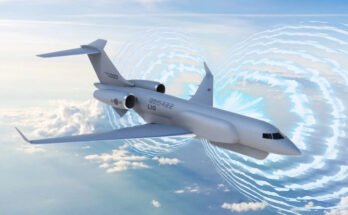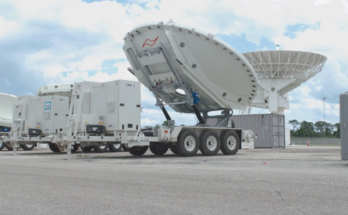by Richard Sterk, Electronic Systems Analyst, Forecast International.
Operation Tomodachi, the U.S. mission that provided disaster relief to Japan following the earthquake and tsunami in 2011, attached newfound significance to the need to update the radiation detection devices that equip surface warships.
All surface warships require an instrument to detect and measure radiological activity in the event of a nuclear detonation. This instrument enables the ship to avoid the radiological danger and continue its mission. Until recently, the Cold War-era PDR-65 gamma radiation detection system was used for this purpose, but, being over 40 years of age, it is obsolete and has been de-fielded. An interim replacement is being used while the Chief of Naval Operations, or OPNAV, updates the scenarios that any new system will be required to address, include radiological (“dirty bomb”) threats. This interim replacement, the IM-265 Survey Meter, is already in U.S. Navy inventory, but it cannot measure radiation external to the ship and therefore is not suitable as the permanent replacement. The Surface Warfare Enterprise board of directors has requested that an air sampling system be developed incorporating the lessons learned from Japan’s Fukushima nuclear reactor accident. U.S. Navy ships sailed unknowingly into plumes of radioactive material released from the damaged nuclear reactors. The ships were widely contaminated and personnel were exposed to radioactive material. Such a system, in this case a new air particle detector (APD), would continuously monitor for airborne radioactive contaminants and provide a real-time measurement at designated locations on the ship, along with appropriate alarms when safe exposure thresholds were surpassed.
R&D funding for a new APD is expected to remain low over the next decade (under $1 million in dedicated R&D dollars per year), but will be consistent and stable as better and more cost-effective radiation measurement and detection equipment is sought by the U.S. Department of Defense and U.S. Department of Homeland Security.
Please feel free to use this content with Forecast International and analyst attributions, along with a link to the article. Contact Ray Peterson at +1 (203) 426-0800 or via email at ray.peterson@forecast1.com for additional analysis.
FI’s eight Electronic Systems Market Intelligence Services cover the full range of defense-related systems and programs in the radar, communications, electro-optical, and electronic warfare markets, presenting a comprehensive market outlook for current equipment as well as new systems being developed as the modern battlefield moves toward a technology-based warfare approach with network-centric capabilities.
For 50 years, Forecast International intelligence reports have been the aerospace and defense industry standard for accurate research, analysis, and projections. Our experienced analysts compile, evaluate, and present accurate data for decision makers. FI's market research reports offer concise analysis of individual programs and identify market opportunities. Each report includes a program overview, detailed statistics, recent developments and a competitive analysis, culminating in production forecasts spanning 10 or 15 years. Let our market intelligence reports be a key part of reducing uncertainties and mastering your specific market and its growth potential. Find out more at www.forecastinternational.com




